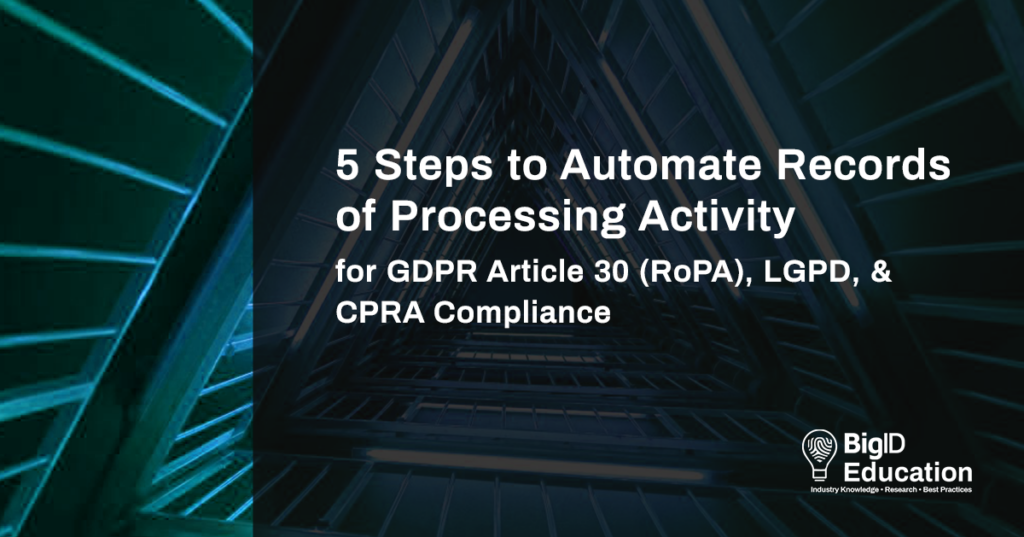In many organizations, data tends to flow like a river. And while that may sound like a pretty smooth and straightforward path, rivers can be unpredictable — and they branch off into distributary channels that drift away from the primary source. Likewise, organizations’ personal data flows — and their management of those flows — can pretty easily branch off into other “channels.” Those channels can be different data owners, departments, regions, or third-party vendors.
To identify where personal data is flowing throughout an organization, data teams need to develop a record of processing activities (RoPA) that allows them to inventory their data processing and see an overview of how personal information is handled.
Understanding how data flows within the business is critical for full preparation and compliance with both current and future privacy regulations. A RoPA benefits any organization by providing better team collaboration, privacy strategy, data governance, business analysis, access management, and data processes.
When automating RoPA for GDPR Article 30 Compliance and the California Privacy Rights Act (CPRA), here are five key steps toward the ultimate goal of seamless compliance:
Step 1: Discover Data
Gain visibility into all your data (data types/data sources) to match data with the right business owners.
Step 2: Automate Data Processing
Enable seamless collaboration with data owners across the organization to document all data processing activities.
Step 3: Map Data Flows
Reflect business processes in a visualized data flow for collect processing activities.
Step 4: Mitigate Risk
Flag, estimate, and evaluate privacy risks (PIA/DPIA) from third-party sharing for RoPA.
Step 5: Report on Compliance
Curate industry standard templates and readable (RoPA) reports providing regulators with necessary proof of compliance.
Record of Processing Activities (RoPA) and Compliance — Simplified
Even though RoPA can be a daunting documentation requirement, it’s imperative to ensure data protection compliance within any organization.
The ongoing maintenance of the RoPA requires automation, as it can be otherwise unmanageable without extensive resources. Finally, establishing continuous compliance requires that all departments involved in processing personal data maintain transparent processes.
With BigID, organizations can manage, monitor, and validate data processing activities (RoPA) for GDPR Article 30 and CPRA compliance.
- Manage all business processes within a centralized dashboard.
- Reduce time spent on the manual, labor-intensive process with automated data flows.
- Receive updates on compliance issues related to each business process, including third-party data sharing.
- Establish a risk-based approach with data governance capabilities that estimates and evaluates privacy risk for PIA & DPIA.
- Easily create regulatory reports for supervisory authorities to comply with GDPR Article 30 and CPRA.
Learn more — and get started with BigID’s Data Mapping App to automate regulatory compliance (GDPR Article 30, CPRA) by building an accurate, efficient Record of Processing Activities.

